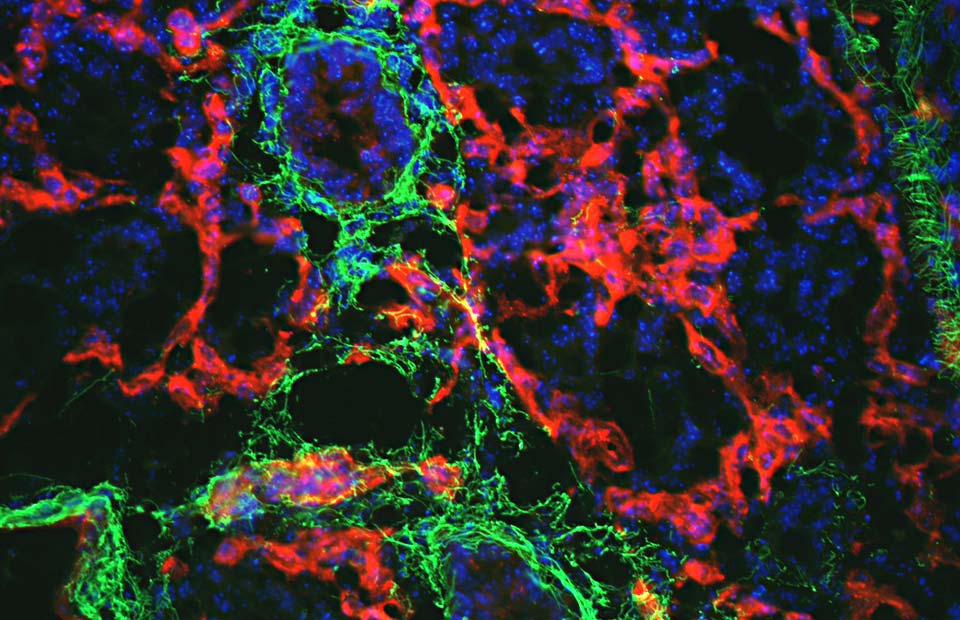
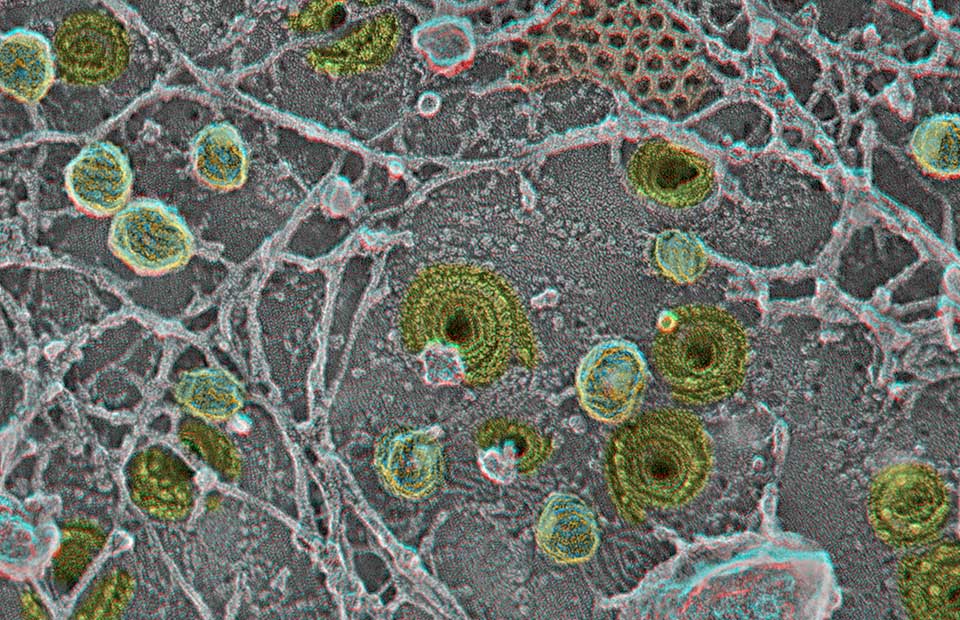

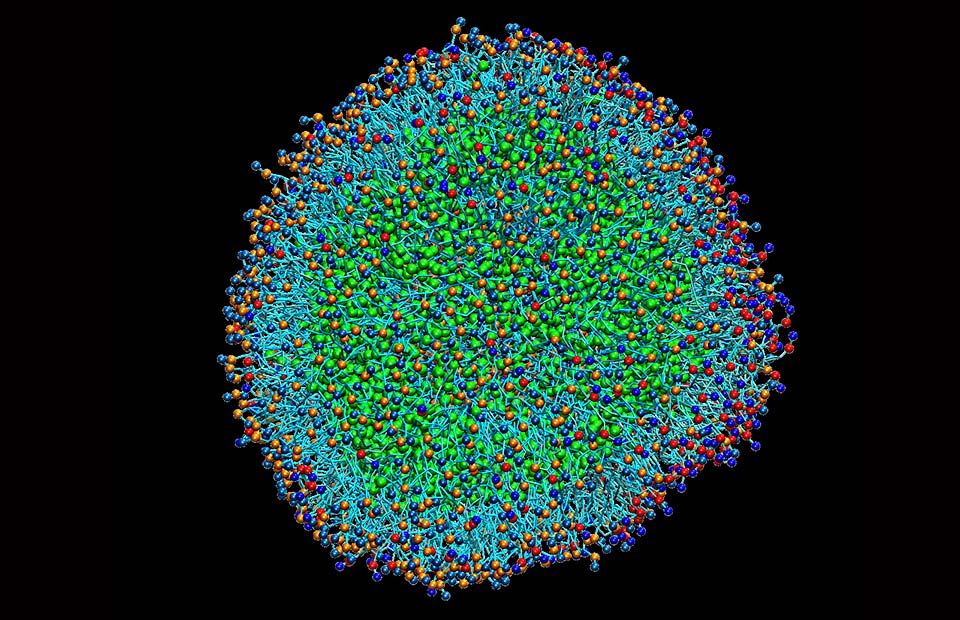
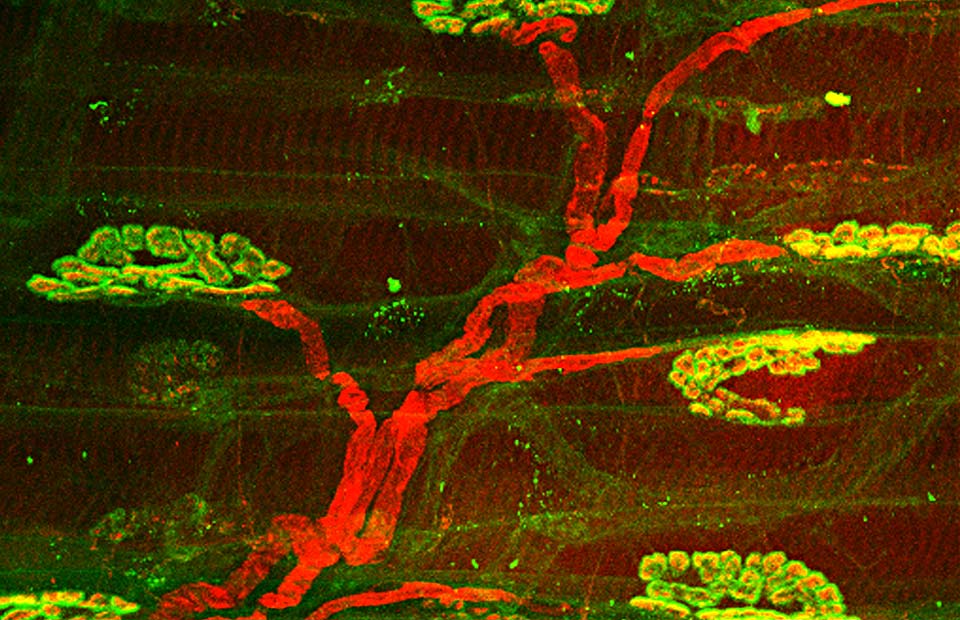
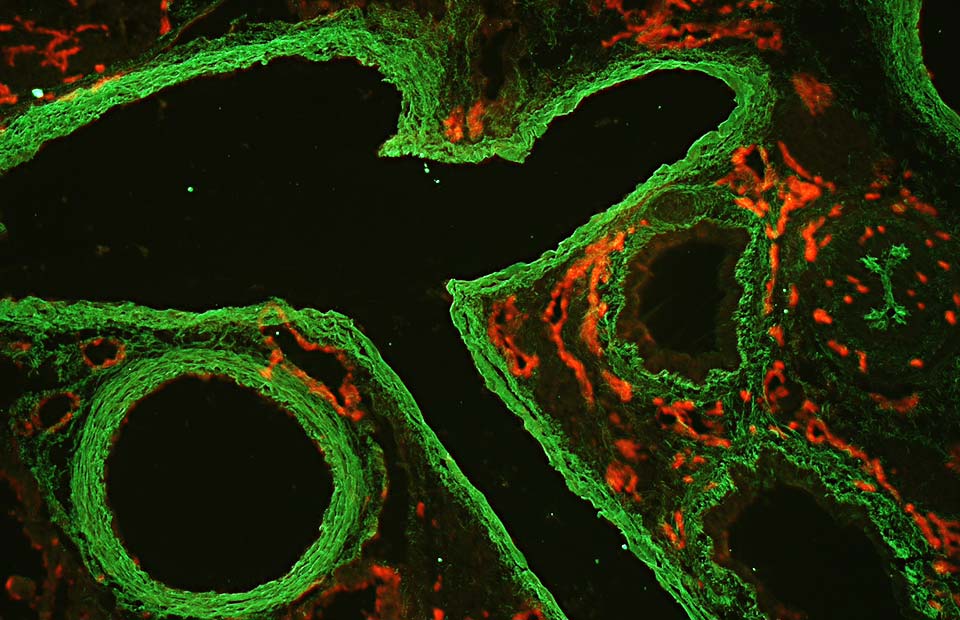
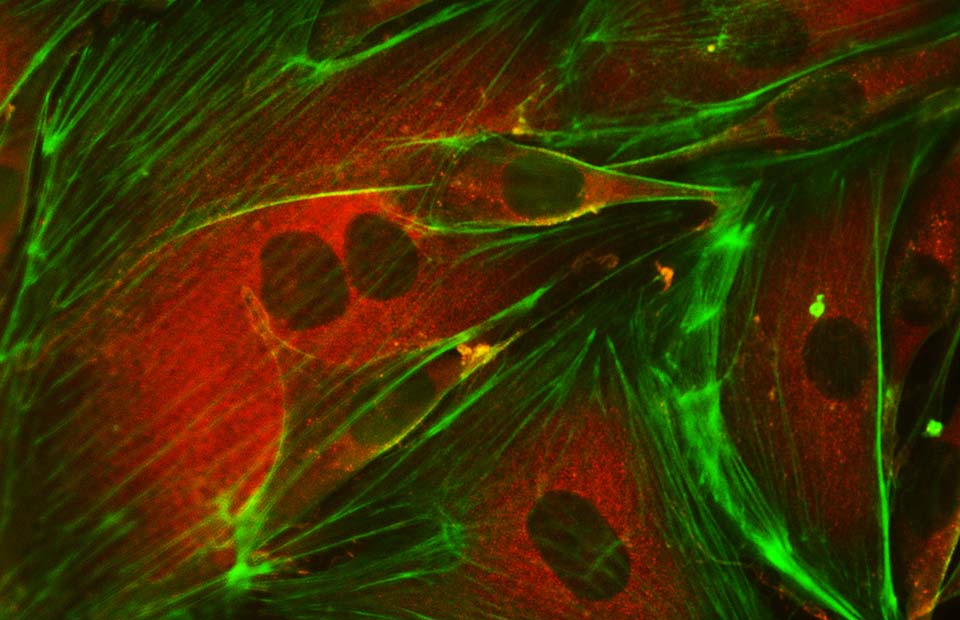
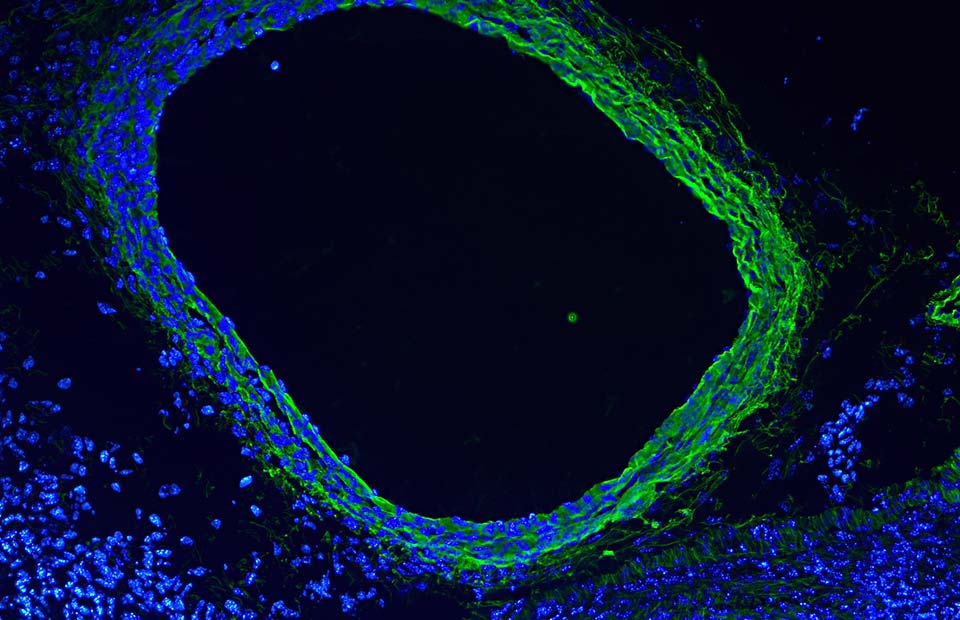
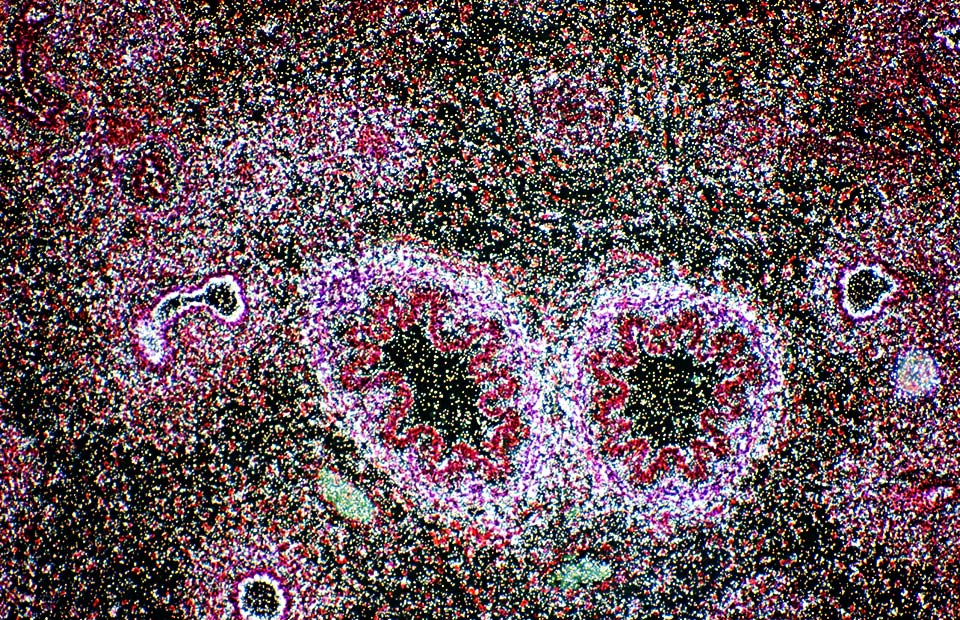
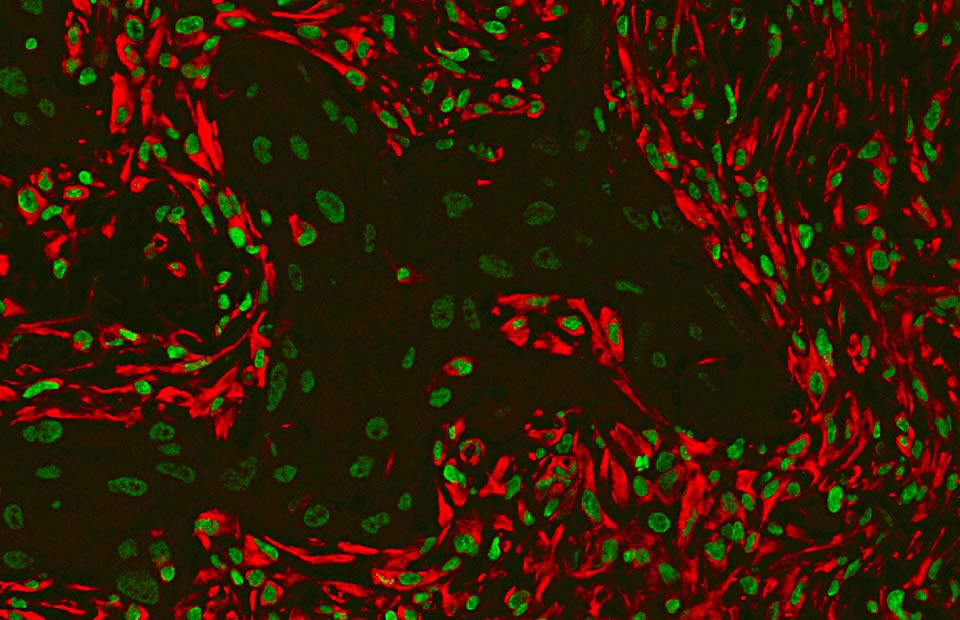



THE BIG PICTURE
Cell biology as art
The exhibit Cell Biology as Art opens Sept. 15 in the Farrell Learning and Teaching Center Atrium at 520 South Euclid Ave. Free and open to the public, the exhibit continues through Oct. 3.
Following is an exhibit introduction by Robert Paul Mecham, PhD, Alumni Endowed Professor and interim head, Department of Cell Biology & Physiology:
“The fundamental science of biology is the study of cells. Cells often exist in communities where they work together to carry out complex functions in response to the environment and coordinate the activities that form the essential systems of life. Scientists who study cells explore basic molecular mechanisms and cellular functions. They have the opportunity to explore the intricate interplay between cells in the process of the formation of functional tissues. The understanding of these functions and interactions in 'normal' cells is crucial for identifying the underlying mechanisms of human disease, knowledge that lays the foundation for developing therapeutic targets and novel therapies to counter disease.
“A powerful way to elucidate cell function is to use microscopy to visualize the organization of molecules within the cell and the architecture of cells within tissues. The images presented in this exhibit reveal the beauty that we, as scientists, uncover in the process of our scientific inquiry. The color palate available to us to 'paint' target cells or molecules is limited by the technical restrictions of the microscope. But the beauty of the images obtained using a limited number of colors provides a stunning snapshot of the art of life.
“Art is a visual language that inspires thought, imagination, and questioning — actions that also ground the creative work of scientists in the laboratory. The images in this exhibit are unlabeled to allow viewers to explore the works through their own artistic imaginations, developing a unique lens through which to appreciate the art of cell biology and to realize that, for the scientist, art can become a crucial source of scientific ideas.”






